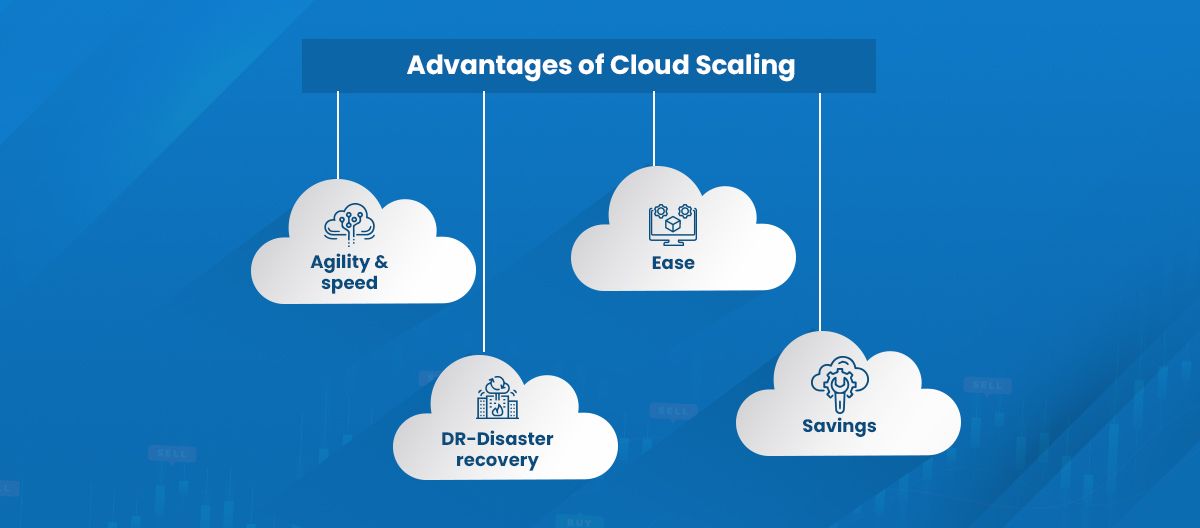Scalability—Is It an Advantage of Cloud Computing?
Enterprises and organizations who were continuously concerned about data storage and protection resources and prices saw the cloud’s scalability as a blessing. Before the advent of the cloud, corporations had to invest much in infrastructure and data storage. In response to this situation, cloud solutions emerged with their distinguishing benefits of low cost and simple scalability.

But what does “cloud scalability” actually mean? What are its advantages? Why is the cloud scalable? How is it possible to scale the cloud? Let’s investigate further.
Cloud Scalability
The ability to raise or reduce IT resources to accommodate changing demand is known as cloud scalability in cloud computing. One of the cloud’s distinguishing characteristics and the main reason for its booming popularity among enterprises is scalability.
Scaling is possible for data storage capacity, processing power, and networking using the current cloud computing architecture. Even better, scaling may be completed fast and simply with little to no downtime or inconvenience. In the past, scaling with on-premises physical equipment could take weeks or months and involve significant money. Third-party cloud providers already have all the infrastructure set up.
Scalability VS Cloud Elasticity
Scalable and elastic solutions are both offered by cloud providers. Although they sound similar, cloud scalability and elasticity are not the same things.
The term “elasticity” describes a system’s capacity to expand or contract dynamically in response to shifting workload needs, such as an unexpected increase in web traffic. In real-time, an elastic system automatically makes adjustments to best match resources with demand. A company with unexpected and fluctuating workloads can look for an elastic solution on the public cloud.
The ability of a system to handle an increase in workload while using its current hardware resources is referred to as scalability. While a flexible solution responds to more immediate, fluctuating swings in demand, a scalable solution enables consistent, longer-term expansion in a planned manner. Both elasticity and scalability are crucial components of a cloud computing system, but whether one should take precedence over the other depends in part on whether your company has predictable or highly fluctuating workloads.
The Reason Why is the Cloud Scalable
Virtualization makes scalable cloud architecture possible. Virtual machines (VMs) are incredibly flexible and are simple to scale up or down, in contrast to physical machines whose resources and performance are largely fixed. Workloads and programmes can be relocated to a different server or hosted on several servers simultaneously; they can also be moved to larger VMs as necessary.
Additionally, third-party cloud providers already have the huge hardware and software resources necessary for speedy scaling that a single organization could not accomplish profitably on its own.
Advantages of Cloud Scaling
Businesses of all sizes are using the cloud due to its enormous scalability advantages

- Agility and speed
Cloud scalability enables IT to react swiftly as business demands change and expand, including unexpected spikes in demand. Even smaller businesses now have access to powerful resources that were previously out of reach financially. Companies are no longer constrained by out-of-date machinery because they can easily update systems and boost power and storage.
- Ease
IT managers may frequently install new VMs with just a few clicks that are immediately accessible—and specifically tailored to the needs of an enterprise. That helps IT staff members save valuable time. Teams can concentrate on other tasks rather than spending hours and days setting up physical hardware.
- DR-Disaster recovery
By forgoing the requirement to construct and maintain alternative data centers, scalable cloud computing allows you to lower disaster recovery expenses.
- Savings
Companies can avoid the up-front costs of buying pricey hardware that can become obsolete in a few years, kudos to cloud scalability. They reduce the waste by paying for only the services they actually utilize through cloud service providers.
Use Cases for Cloud Scalability
Scalable business models are used by successful companies so they can expand swiftly and adapt to market changes. With their IT, it is the same. The benefits of cloud scalability keep firms adaptable and competitive.
One of the main motivations for moving to the cloud is Scalability. A scalable cloud solution enables businesses to respond accordingly and affordably to increase storage and performance, regardless of how quickly or steadily traffic or workload demands develop.
How Is Cloud Scalability Achieved?
Public cloud, private cloud, or hybrid cloud are just a few of the possibilities available to businesses for setting up a customized, scalable cloud system. In cloud computing, there are primarily two types of scalability: vertical scaling and horizontal scaling.
By adding or removing power to an existing cloud server through vertical scaling, sometimes referred to as “scaling up” or “scaling down,” you can upgrade memory (RAM), storage, or processing power (CPU). This typically means that scaling has an upper limit dependent on the server or machine’s capability, and scaling above that point frequently necessitates downtime.
In order to scale horizontally (increase or decrease performance and storage), you add extra servers to your system to spread out the burden over more computers. Businesses with high availability services necessitating little downtime should pay particular attention to horizontal scaling.
How Is The Best Cloud Scalability Determined?
Your scalable cloud solution frequently needs to be modified due to shifting company needs or soaring demand. But how much processing capacity, storage, and space do you actually require? Will you scale up or down?
Performance testing must continue in order to find the right-sized solution. IT managers must continuously monitor variables including response time, request volume, CPU load, and memory utilization. Testing for scalability also evaluates an application’s functionality and capacity to scale up or down in response to user demands.
Cloud scalability can also be improved with automation. To ensure that performance is unaffected, use criteria that initiate automatic scaling can be established. To assist in managing your scaling needs, objectives, and execution, you might also think about using a third-party configuration management service or application.
- Scalability—Is It an Advantage of Cloud Computing? - September 14, 2022
- Cybersecurity in the BFSI Sector Has Stepped Up Get to know why? - January 31, 2020
